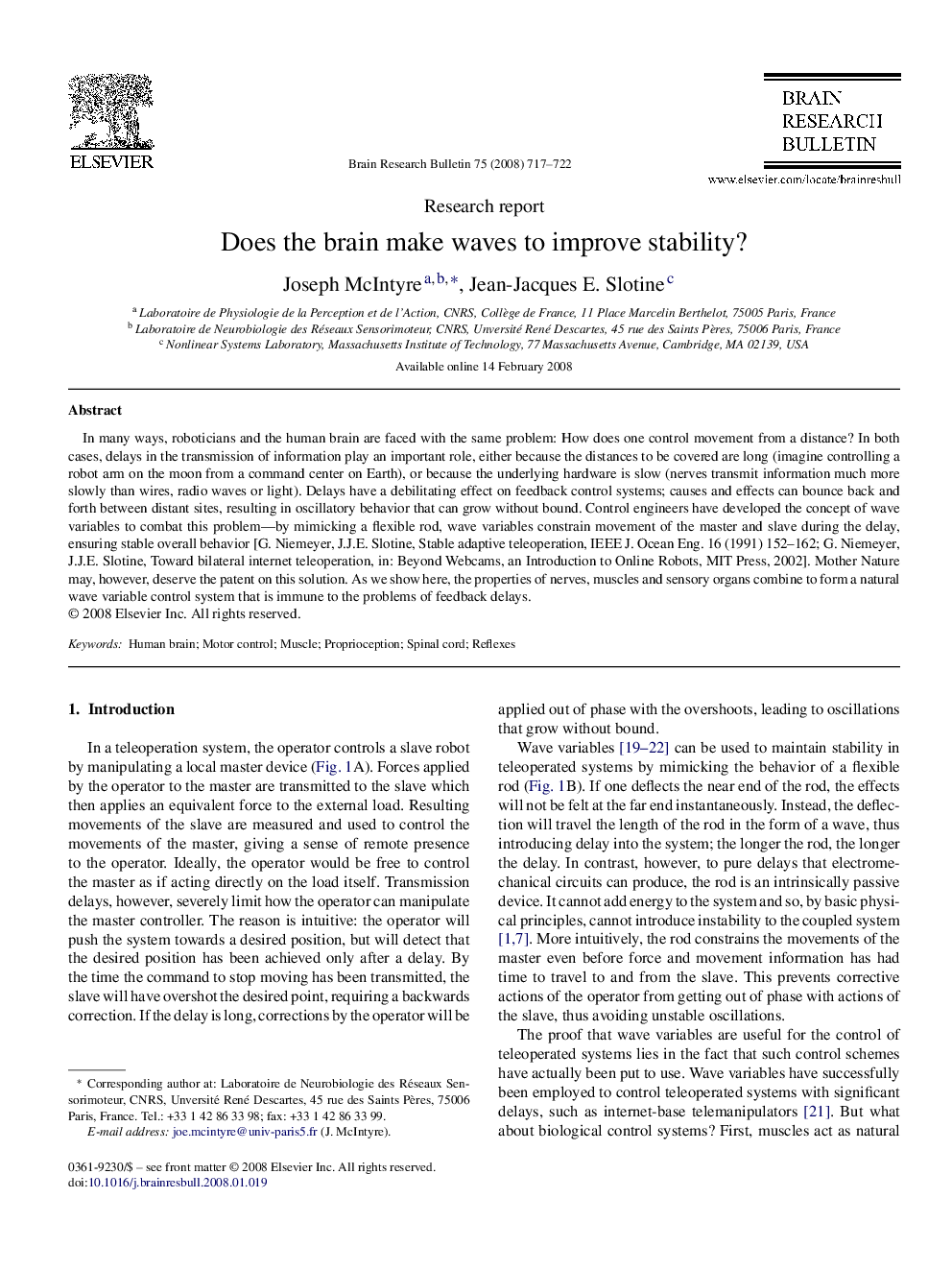| کد مقاله | کد نشریه | سال انتشار | مقاله انگلیسی | نسخه تمام متن |
|---|---|---|---|---|
| 4319587 | 1290822 | 2008 | 6 صفحه PDF | دانلود رایگان |

In many ways, roboticians and the human brain are faced with the same problem: How does one control movement from a distance? In both cases, delays in the transmission of information play an important role, either because the distances to be covered are long (imagine controlling a robot arm on the moon from a command center on Earth), or because the underlying hardware is slow (nerves transmit information much more slowly than wires, radio waves or light). Delays have a debilitating effect on feedback control systems; causes and effects can bounce back and forth between distant sites, resulting in oscillatory behavior that can grow without bound. Control engineers have developed the concept of wave variables to combat this problem—by mimicking a flexible rod, wave variables constrain movement of the master and slave during the delay, ensuring stable overall behavior [G. Niemeyer, J.J.E. Slotine, Stable adaptive teleoperation, IEEE J. Ocean Eng. 16 (1991) 152–162; G. Niemeyer, J.J.E. Slotine, Toward bilateral internet teleoperation, in: Beyond Webcams, an Introduction to Online Robots, MIT Press, 2002]. Mother Nature may, however, deserve the patent on this solution. As we show here, the properties of nerves, muscles and sensory organs combine to form a natural wave variable control system that is immune to the problems of feedback delays.
Journal: Brain Research Bulletin - Volume 75, Issue 6, 15 April 2008, Pages 717–722